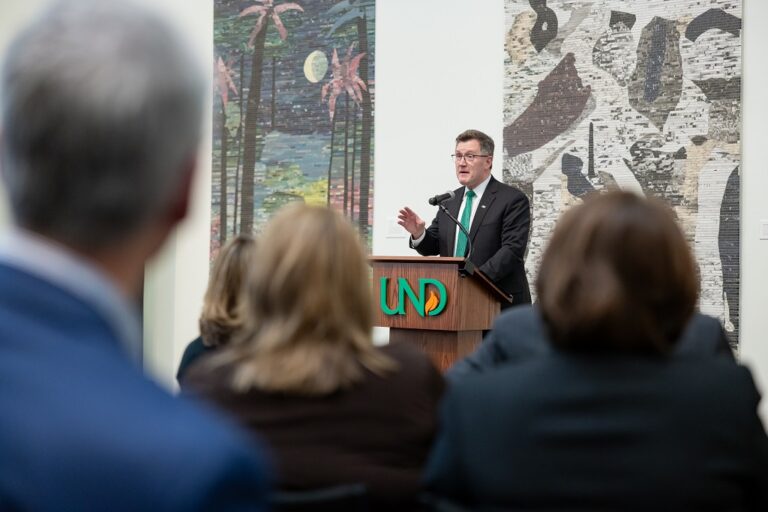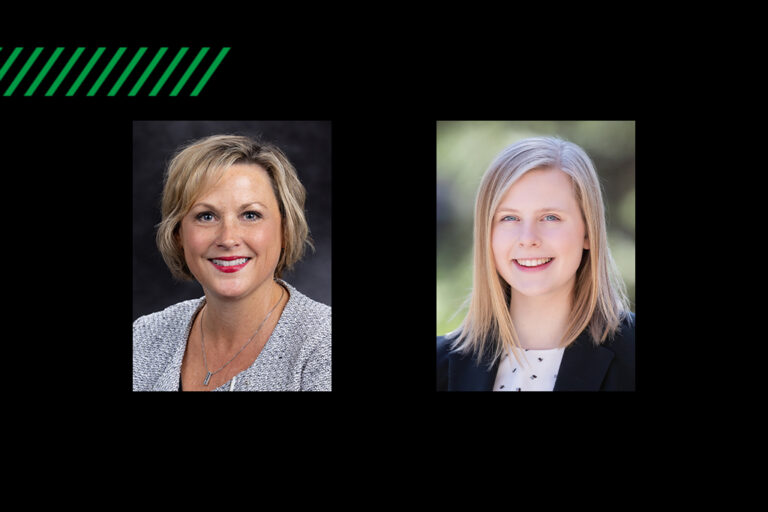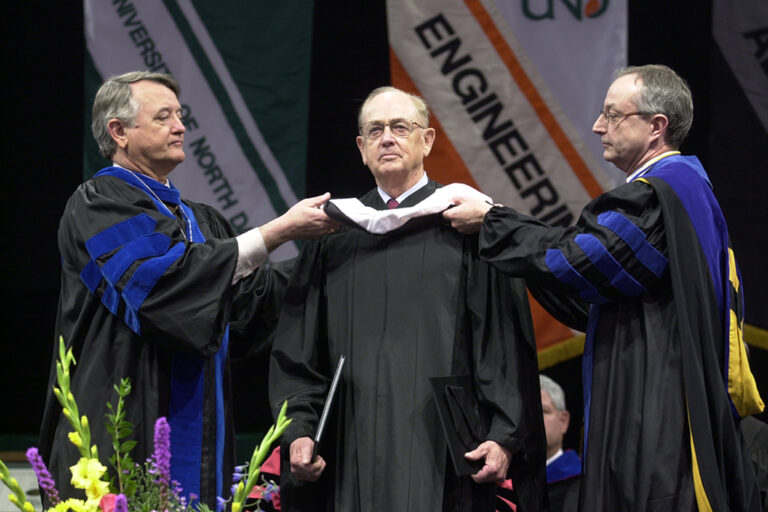Careers close by
UND students bring sharp skills to City projects through lasting internship program
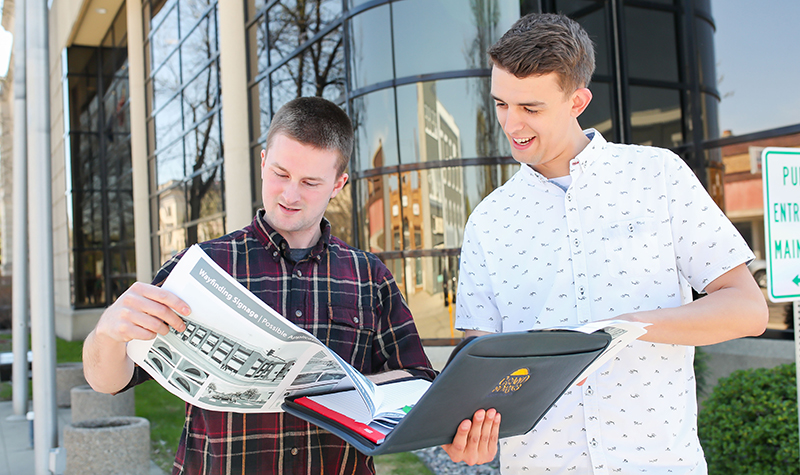
It’s a partnership that’s really only possible in a town like Grand Forks, Ilene Odegard says.
Now in its sixth year, an internship program between the City of Grand Forks and the University of North Dakota places up to 14 students each year in a variety of City Hall departments.
Odegard, director of Career Services at UND, says the personal relationships developed between the City and University have steadily grown the program into an attractive tool for retaining student talent. The City has hired eight interns full-time, filling crucial positions with skills that help Grand Forks save money and advance its service to citizens.
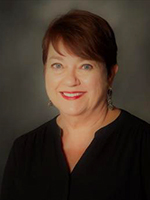
“It’s a great pride,” Odegard said of placing students in important roles. “To see that growth in the students we get to know over time is so rewarding.”
Just the other week, Odegard and Haley Rosaasen, a human resources specialist from City Hall, helped fill a last-minute internship position over lunch. Rosaasen praised the University as a valuable partner in advertising opportunities, whether personally, through the Handshake platform or the Pancratz Career Development Center on campus.
“What’s ideal about this program is that it fills the skill gap when we’re looking at succession planning for hard-to-fill positions,” Rosaasen said. Also, internships with the City are project-based. “We’re never bringing on an intern just to get coffee. They’re working on a project that full-time staff could do, but we’d rather bring in an intern with a fresh perspective and ideas.”
Rosaasen says internships go across the board of city operations – civil engineering, law enforcement, accounting, social work and public health, to name a few.
“We’re seeing reports that millennials are not interested in local government,” Rosaasen said. “We’re trying to shake that reputation by showing there’s more to government. You get to interact and have the biggest impact on citizens at this level.”
Facilitating growth
Andy Conlon is an alumnus of the internship program who currently works for the City as a community development specialist, facilitating projects directly affecting what Grand Forks will look like in the next decade.
Contrary to the trends Rosaasen referenced, Conlon carried an interest in government after earning his bachelor’s degree in political science from UND. After an internship at the federal level, he wanted to shift to a local focus as he pursued a master’s in business administration.
“I was walking to a night class early and saw there was a Grand Forks Career Fair happening at the Career Center,” Conlon said. “I was interested in local government and wanted that type of experience. It turned out to be a good decision to stop by.”
Conlon’s interest in the intersection of government and business earned him an internship under City Administrator Todd Feland, who gave him both close mentorship and a fair amount of autonomy in accomplishing tasks.
His biggest project was the Downtown Inventory Project – a comprehensive collection of data regarding the downtown area. Before downtown development was taking off, as it is this summer, there was a need to understand the potentials for growth. Conlon’s footwork informed the Mayor’s Vibrancy Initiative, which has further developed into the Downtown Action Plan: one of Conlon’s current projects as a full-time employee.
“The work I did in my internship felt meaningful and has been proven as such, since I’m still working with it,” he said.
Also recognized by its acronym, DAP, the Downtown Action Plan focuses on four areas: streetscaping, wayfinding, Town Square/parks and development strategies. Some of the first steps will be taken this summer as Demers Avenue, which runs straight through downtown, undergoes major reconstruction. Up to $100 million in public and private investment is expected downtown in the next five years.
“There are a lot of irons in the fire,” Conlon said about his position and department, Planning & Community Development. “I’ve been administering the day-to-day of the DAP, working with federal programming as well as the City’s economic development fund. It’s something new every day in a department where you can mold tasks to your strengths.”
He says he enjoyed his time at UND, in the Grand Forks community, and his position adds another level of depth to that perspective.
“Being in a position to affect the change you want to see and working with people who can make those changes is really cool,” Conlon said.
Experience never hurts
The value that might be overlooked, Conlon says, is the fact internship positions with the City are paid through funding from the City and University. It opens the door for candidates who otherwise couldn’t afford to work for experience.
One of those candidates was Jacob Mattison, who came to UND from Thief River Falls, Minn., to study geography and geographic information systems (GIS). Before graduating in 2017, Mattison was working a warehouse job. The pay was decent, and at first he wasn’t too interested when he saw a GIS internship advertised with the City.
“At first I thought I didn’t want to try it,” Mattison recalled, “Then I realized it would help me get a job down the road, and more experience never hurts.”
The road to which Mattison referred was more direct than anticipated. His education came into use right away, as his GIS courses used the mapping software to which the City was then transitioning.
“The two worked hand-in-hand,” he said when asked if he was able to apply his UND experience. “I had an understanding of what they were using, so then I could learn new skills to apply to their processes.”
The extra set of hands eased the transition of technology, and Mattison’s presence was a relief to the City’s main GIS expert, Josh Vigness, who was tied up with tasks and requests in the Information Technologies and Services department.
During his internship, Mattison says he also helped develop web applications for the Planning & Community Development department to better visualize its “irons in the fire.”
“Before, you’d click on the development projects and you’d see a list of them, with addresses,” he said. “I created a GIS application so the public can see a picture of the site plan, and clicking on it will put it on a map so you can see exactly where it’s happening, what stage the project is in and other correlating projects around it.”
Expanding partnership
Today, Mattison utilizes GIS as a land records technician, working with plats and annexations for the City. As new developments come into town, the City “annexes” new land into city limits, which is then plotted into different lots.
“Essentially, that needs to be updated so people can put permits on parcels, place utility bills, see it on a map – there’s a whole process to it,” he said.
The longer he’s with the city, the more technical his tasks become. Mattison says UND was a good place to start his journey, and the geography department’s faculty helped him adjust to using technology on the job. Now some of his work involves building and implementing a more robust GIS data download site for the public, and he has UND geography students in mind.
“It’s good the City has this kind of relationship with UND, and vice versa,” he said.
“UND is an integral part of what Grand Forks is – they’re inseparable,” Conlon said. “They both fully realize and embrace that. They’re exploring as many ways as possible to expand that partnership and weave themselves on different issues and projects. I think that relationship is continually improving.”

